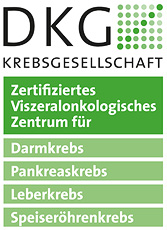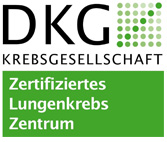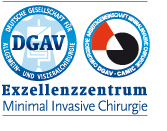Transplantation

AG Tissue Engineering und Zelltransplantation
| Sekretariat Frau Petra Lambert | |
| Telefon | 0228 287 15801 |
| Fax | 0228 287 14856 |
Profil der Arbeitsgruppe „Tissue Engineering und Zelltransplantation“
Forschungsschwerpunkt unserer Arbeitsgruppe ist der Einsatz von Leberzellen und Zellen der Bauchspeicheldrüse in der Transplantationsmedizin, wobei die Zellen in vitro auf dreidimensionalen, hochporösen Polymermatrizen verschiedener Art und Herkunft vorkultiviert werden. Das Ziel unserer Arbeit ist die Entwicklung eines Gewebeersatzes für Leber und endokrine Bauchspeicheldrüse mittels Tissue Engineering. Das in vitro neu gebildete Gewebe könnte in der Zukunft als Alternative zur allogenen Transplantation kompletter Organe bei Patienten mit Erkrankungen der Leber und Bauchspeicheldrüse zum Einsatz kommen. Da die Leberzellkultur auch zur Lösung metabolischer und toxikologischer Fragestellungen eingesetzt werden kann, befassen sich Projekte unserer Arbeitsgruppe auch mit den Einsatzmöglichkeiten von auf 3D Polymermatrizen in vitro kultivierten primären Hepatozyten im Bereich Pharmakologie/Toxikologie.
In der Vergangenheit konnten bereits die Techniken zur Isolierung von Hepatozyten (2-4, 7, 8, 12-18, 25, 28-38) und Langerhanszellen (1,9-12, 14, 19, 22-24, 26, 27) von uns etabliert werden. Die 3D in vitro Präimplantationskultur dieser Zellen auf hochporösen Matrizen wird in unserer Arbeitsgruppe unter statischen (3, 4) und pulsatilen Flussbedingungen (29-33) durchgeführt, was die Anpassung der Kulturbedingungen an den jeweiligen Zelltyp und die im Einsatz befindliche Matrix ermöglicht. Zudem haben wir eine Vielzahl von Matrizen unterschiedlicher Größe und Herkunft auf ihre Tauglichkeit für den Einsatz im Bereich Tissue Engineering getestet. Die Arbeit mit biologisch abbaubaren Matrizen auf Basis von Poly-L-milchsäure (PLLA) stand hierbei im Vordergrund (4, 6, 29-33). Mittels der von uns durchgeführten Untersuchungen konnte der Produktionsprozess der Matrizen durch Beeinflussung von Porengröße, Struktur und Beschichtung den Anforderungen des gewünschten Zelltyps angepasst werden. Aktuelle Untersuchungen beschäftigen sich mit dem Einsatz von Alginatmatrizen, welche sich mittels Citratpuffer vollständig degradieren lassen (3). Das im Rahmen der Vorkultur von Hepatozyten auf Alginatmatrizen gebildete Leberneogewebe mit differenzierter Stoffwechselleistung und ausgezeichneter metabolischer Aktivität kann somit durch Auflösen der Matrix rückgewonnen werden und möglicherweise zukünftig anstelle von Einzelzellen mittels Applikation über die Pfortader transplantiert werden (5). Somit könnte das von uns entwickelte und zum Patent angemeldete System (20, 21) demnächst in vivo zum Einsatz kommen. Dem Mangel an geeigneten Spenderorganen für die Transplantation könnte so durch den Einsatz unserer 3D Systeme in Zukunft begegnet werden.

Torok, E.; Lutgehetmann, M.; Bierwolf, J.; Melbeck, S.; Dullmann, J.; Nashan, B.; Ma, P. X.; Pollok, J. M.
Primary human hepatocytes on biodegradable poly(l-lactic acid) matrices: A promising model for improving transplantation efficiency with tissue engineering.
Liver Transpl 17(2):104-114; 2011.

Bierwolf, J.; Lutgehetmann, M.; Feng, K.; Erbes, J.; Deichmann, S.; Toronyi, E.; Stieglitz, C.; Nashan, B.; Ma, P. X.; Pollok, J. M.
Primary rat hepatocyte culture on 3D nanofibrous polymer scaffolds for toxicology and pharmaceutical research.
Biotechnol Bioeng 108(1):141-150; 2011.
Die interdisziplinäre Zusammenarbeit von Medizinern verschiedener Fachgebiete und Naturwissenschaftlern kennzeichnen unsere Arbeitsgruppe. Eine enge wissenschaftliche Zusammenarbeit besteht mit folgenden Forschungsgruppen:
| Prof. Dr. Peter X. Ma Department of Biologic and Materials Sciences, University of Michigan, Ann Arbor, USA www.dent.umich.edu/about-school/department/bms/ma-lab |
| Prof. Dr. Maura Dandri-Petersen Dr. Marc Lütgehetmann AG Virushepatitis, I. Medizinische Klinik, Zentrum für Innere Medizin, Universitätsklinikum Hamburg-Eppendorf www.uke.de/kliniken/medizinische-klinik-1 |
| Prof. Dr. Péter Nagy PD Dr. Sándor Paku 1st Department of Pathology and Experimental Cancer Research, Semmelweis University, Budapest www.semmelweis.hu/english/faculties/faculty-of-medicine/departments/1st-department-of-pathology-and-experimental-cancer-research/ |
| Prof. Dr. Smadar Cohen Avram and Stella Goldstein-Goren Department of Biotechnology, Ben-Gurion-University of the Negev, Israel in.bgu.ac.il/ |
Publikationen
| 1. | Begemann, J. F.; Pollok, J. M.; Kaufmann, P. M.; Kluth, D.; Broelsch, C. E.; Rogiers, X. |
| 2. | Belloni, L.; Allweiss, L.; Guerrieri, F.; Pediconi, N.; Volz, T.; Pollicino, T.; Petersen, J.; Raimondo, G.; Dandri, M.; Levrero, M. |
| 3. | Bierwolf, J.; Lutgehetmann, M.; Deichmann, S.; Erbes, J.; Volz, T.; Dandri, M.; Cohen, S.; Nashan, B.; Pollok, J. M. |
| 4. | Bierwolf, J.; Lutgehetmann, M.; Feng, K.; Erbes, J.; Deichmann, S.; Toronyi, E.; Stieglitz, C.; Nashan, B.; Ma, P. X.; Pollok, J. M. |
| 5. | Bierwolf, J.; Pollok, J. M. |
| 6. | Cusick, R. A.; Lee, H.; Sano, K.; Pollok, J. M.; Utsunomiya, H.; Ma, P. X.; Langer, R.; Vacanti, J. P. |
| 7. | Dandri, M.; Burda, M. R.; Zuckerman, D. M.; Wursthorn, K.; Matschl, U.; Pollok, J. M.; Rogiers, X.; Gocht, A.; Kock, J.; Blum, H. E.; von Weizsacker, F.; Petersen, J. |
| 8. | Giersch, K.; Helbig, M.; Volz, T.; Allweiss, L.; Mancke, L. V.; Lohse, A. W.; Polywka, S.; Pollok, J. M.; Petersen, J.; Taylor, J.; Dandri, M.; Lutgehetmann, M. |
| 9. | Kaufmann, P. M.; Fiegel, H. C.; Kneser, U.; Pollok, J. M.; Kluth, D.; Rogiers, X. |
| 10. | Kaufmann, P. M.; Kneser, U.; Fiegel, H. C.; Pollok, J. M.; Kluth, D.; Izbicki, J. R.; Herbst, H.; Rogiers, X. |
| 11. | Kaufmann, P. M.; Pollok, J. M.; Fiegel, H. C.; Kneser, U.; Rogiers, X.; Broelsch, C. E. |
| 12. | Kneser, U.; Kaufmann, P. M.; Fiegel, H. C.; Pollok, J. M.; Kluth, D.; Herbst, H.; Rogiers, X. |
| 13. | Kneser, U.; Kaufmann, P. M.; Fiegel, H. C.; Pollok, J. M.; Kluth, D.; Herbst, H.; Rogiers, X. |
| 14. | Kneser, U.; Kaufmann, P. M.; Fiegel, H. C.; Pollok, J. M.; Rogiers, X.; Kluth, D.; Herbst, H. |
| 15. | Lutgehetmann, M.; Bornscheuer, T.; Volz, T.; Allweiss, L.; Bockmann, J. H.; Pollok, J. M.; Lohse, A. W.; Petersen, J.; Dandri, M. |
| 16. | Lutgehetmann, M.; Mancke, L. V.; Volz, T.; Helbig, M.; Allweiss, L.; Bornscheuer, T.; Pollok, J. M.; Lohse, A. W.; Petersen, J.; Urban, S.; Dandri, M. |
| 17. | Oehler, N.; Volz, T.; Bhadra, O. D.; Kah, J.; Allweiss, L.; Giersch, K.; Bierwolf, J.; Riecken, K.; Pollok, J. M.; Lohse, A. W.; Fehse, B.; Petersen, J.; Urban, S.; Lutgehetmann, M.; Heeren, J.; Dandri, M. |
| 18. | Petersen, J.; Dandri, M.; Mier, W.; Lutgehetmann, M.; Volz, T.; von Weizsacker, F.; Haberkorn, U.; Fischer, L.; Pollok, J. M.; Erbes, B.; Seitz, S.; Urban, S. |
| 19. | Pollok, J. M.; Begemann, J. F.; Kaufmann, P. M.; Kluth, D.; Broelsch, C. E.; Izbicki, J. R.; Rogiers, X. |
| 20. | Pollok, J. M.; Bierwolf, J. |
| 21. | Pollok, J. M.; Bierwolf, J. |
| 22. | Pollok, J. M.; Ibarra, C.; Broelsch, C. E.; Vacanti, J. P. |
| 23. | Pollok, J. M.; Ibarra, C.; Vacanti, J. P. |
| 24. | Pollok, J. M.; Ibarra, C.; Vacanti, J. P. |
| 25. | Pollok, J. M.; Kluth, D.; Cusick, R. A.; Lee, H.; Utsunomiya, H.; Ma, P. X.; Langer, R.; Broelsch, C. E.; Vacanti, J. P. |
| 26. | Pollok, J. M.; Kolln, P. A.; Lorenzen, M.; Torok, E.; Kaufmann, P. M.; Kluth, D.; Bohuslavizki, K. H.; Gundlach, M.; Rogiers, X. |
| 27. | Pollok, J. M.; Lorenzen, M.; Kolln, P. A.; Torok, E.; Kaufmann, P. M.; Kluth, D.; Bohuslavizki, K. H.; Gundlach, M.; Rogiers, X. |
| 28. | Sturm, A.; Amino, R.; van de Sand, C.; Regen, T.; Retzlaff, S.; Rennenberg, A.; Krueger, A.; Pollok, J. M.; Menard, R.; Heussler, V. T. |
| 29. | Torok, E.; Lutgehetmann, M.; Bierwolf, J.; Melbeck, S.; Dullmann, J.; Nashan, B.; Ma, P. X.; Pollok, J. M. |
| 30. | Torok, E.; Pollok, J. M.; Ma, P. X.; Kaufmann, P. M.; Dandri, M.; Petersen, J.; Burda, M. R.; Kluth, D.; Perner, F.; Rogiers, X. |
| 31. | Torok, E.; Pollok, J. M.; Ma, P. X.; Kaufmann, P. M.; Dandri, M.; Petersen, J.; Burda, M. R.; Kluth, D.; Perner, F.; Rogiers, X. |
| 32. | Torok, E.; Pollok, J. M.; Ma, P. X.; Vogel, C.; Dandri, M.; Petersen, J.; Burda, M. R.; Kaufman, P. M.; Kluth, D.; Rogiers, X. |
| 33. | Torok, E.; Vogel, C.; Lutgehetmann, M.; Ma, P. X.; Dandri, M.; Petersen, J.; Burda, M. R.; Siebert, K.; Dullmann, J.; Rogiers, X.; Pollok, J. M. |
| 34. | Uyama, S.; Kaufmann, P. M.; Kneser, U.; Fiegel, H. C.; Pollok, J. M.; Kluth, D.; Vacanti, J. P.; Rogiers, X. |
| 35. | van de Sand, C.; Horstmann, S.; Schmidt, A.; Sturm, A.; Bolte, S.; Krueger, A.; Lutgehetmann, M.; Pollok, J. M.; Libert, C.; Heussler, V. T. |
| 36. | Volz, T.; Allweiss, L.; Ben, M. M.; Warlich, M.; Lohse, A. W.; Pollok, J. M.; Alexandrov, A.; Urban, S.; Petersen, J.; Lutgehetmann, M.; Dandri, M. |
| 37. | Volz, T.; Lutgehetmann, M.; Allweiss, L.; Warlich, M.; Bierwolf, J.; Pollok, J. M.; Petersen, J.; Matthes, E.; Dandri, M. |
| 38. | Weber, K.; Thomaschewski, M.; Warlich, M.; Volz, T.; Cornils, K.; Niebuhr, B.; Tager, M.; Lutgehetmann, M.; Pollok, J. M.; Stocking, C.; Dandri, M.; Benten, D.; Fehse, B. RGB marking facilitates multicolor clonal cell tracking. Nat Med 17(4):504-509; 2011. |








